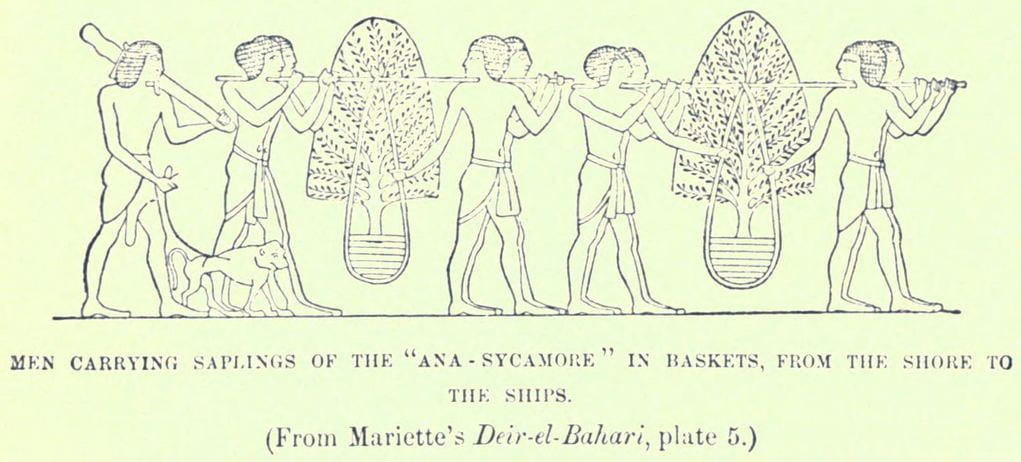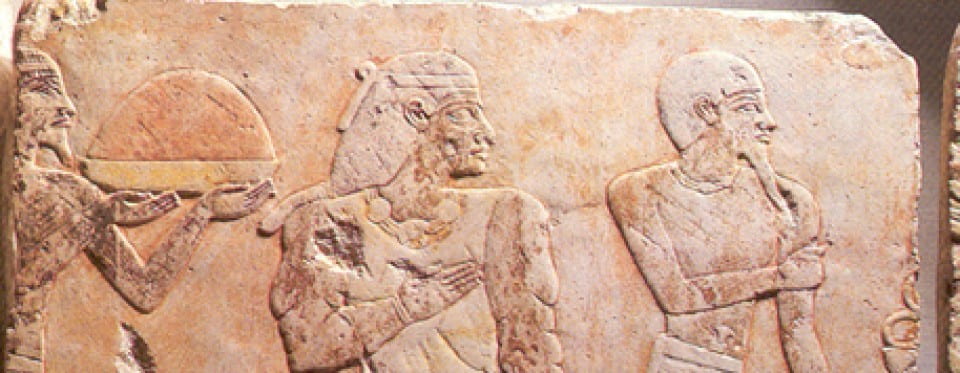High value plant-based resins, and some other Christmas gifts
Gold, frankincense, and myrrh – the Christmas presents from the Three Wise Men, the Magi, to the infant Christ. I am not sure how much the new-born infant himself appreciated them, but I’m sure his Mum and Dad were delighted. Who could object to a gift of a precious metal and the aromatic resin of two trees – Boswellia sacra (frankincense) and Commiphora myrrha (myrrh).
B. sacra and C. myrrha are members of the plant family Burseraceae, and are found in the arid areas of the Horn of Africa and southern Arabia. Trees in this family produce a sticky resin or gum when injured. The resin helps the tree to heal and contains a complex mixture of antimicrobial compounds that prevent bacteria and fungi colonising the wound. Many of these compounds are aromatic and fragrant.
Four thousand years ago frankincense and myrrh were highly valued by the civilisations of ancient Egypt, and were sourced from the almost mythical Land of Punt (1). The precise geographical location of Punt is still debated, but it probably comprised an area which is now part of Somalia and Ethiopia, the area in which Boswellia and Commiphora are naturally found.
The Ancient Egyptians traded goods such as linen and papyrus for frankincense and myrrh, and also brought back from their trading missions living myrrh trees for their royal gardens, and other items such as cheetahs and giraffes. The engravings on the walls of the mortuary chamber (2) of the Pharaoh Sahure (2465-2325 BC ; ‘He who is close to Re’) depicts this god-like Pharaoh gardening and tending a myrrh tree as his family watches on. Maybe he also enjoyed talking to his trees. Even more remarkable are the extensive reliefs of the mortuary chamber (3) of the second female Pharaoh Hatshepsu (1507–1458 BC) that provide a detailed account of a journey to the Land of Punt and the return with 31 fully grown myrrh trees – the earliest known record of a botanical collecting expedition. (4)(5)
Two thousand years later at time of the birth of Christ, these two plant resins had become an important part of the spiritual world and the medical tool-box of the ancient cultures of China and India. The resins could be chewed, and were advocated as cures for all sorts of ailments – somewhat resonate with the claims made for many of our current day ‘plant bioactives’. The resins could be steamed to allow the collection of essential oils which were used for therapeutic uses and to embalm the dead, and were burnt as incense, a tradition that continues within the Catholic and Orthodox Christian churches.
A further 2,000 years onwards to our present day and gold is still a most valuable item, and indeed its value has risen this year with the uncertainty in financial markets due to the pandemic, but as for frankincense and myrrh – you can now buy these fairly cheaply on-line, no need for an expedition to the Land of Punt…
Plant resins have also played a major role in the history of New Zealand, and especially of Auckland. While there are not any members of Burseraceae growing in Aotearoa, we have the endemic kauri Agathis australis – a member of that wonderful ancient family of trees the Araucariaceae.
Kauri must rank as the world’s greatest gum producer; the kauri forests that covered much of the northern part of the North Island prior to human colonisation left huge deposits of buried gum. Māori used the gum – kāpia – for many purposes, including lighting fires, as a pigment for moko and for carving to make jewellery. However, in the early 19th century it became one of New Zealand’s most important export products for the manufacture of paints and varnishes. Indeed from 1850 to 1900 kauri gum was Auckland’s main export, ahead of gold, wool and timber, and the trade underpinned the early growth of the city(6).
By the 1890s it had become harder for the ‘gum-diggers’ to find gum deposits in the ground and attempts were made to harvest gum from living trees but this practice was banned in 1905 to protect the remaining stands of kauri. By the 1930s, cheaper synthetic alternative to kauri gum had become available so that the industry that had stimulated the growth of Auckland came to an end.
This Christmas, however, maybe we should not hope for gold, frankincense or myrrh, or even kāpia. Instead, we can look forward to a Christmas selection of Covid-19 vaccines, and it does seem that these will be brought to us in a very large number of small vials.
The story of the development of Covid-19 vaccines is one of the triumph of the western science paradigm – from free sharing of the Covid-19 genome sequence in January by Chinese scientists, to the execution of phase 3 trials to attempt to falsify the hypothesis that the Covid-19 vaccine would be no more effective in reducing infection than a placebo. It came through the objective assessment of data by scientists without reference to their own beliefs and biases. We need to champion these approaches, and in our science endeavors within the High-Value Nutrition National Science Challenge to proceed with exceptional caution if we consider stepping away from a strict adherence to this scientific methodology.
The development of the Covid-19 vaccines will be a story (and no doubt in due course a Netflix drama-documentary) to enthuse the younger generation to pursue a career in science, just as the discovery of DNA, the Apollo moon mission and David Attenborough’s ‘Life of Earth’ enthused earlier generations, including myself.
________________
(1) https://landofpunt.wordpress.com/tag/myrrh/
(2) The burial chambers of Pharaoh Sahure are at Abusir near Cairo
(3) The burial chambers of Pharaoh Hatshepsu are at Deir el-Bahari near Luxor
(4) file:///Users/rmit294/Downloads/MuelleriaVol_35_-_p43_Spencer_and_Cross_002.pdf
(5) https://www.jstor.org/stable/3856000
(6) https://teara.govt.nz/en/kauri-gum-and-gum-digging/page-4
 Men carrying saplings of the “Ana-Sycamore” in baskets from the shore to the ships
Men carrying saplings of the “Ana-Sycamore” in baskets from the shore to the ships
